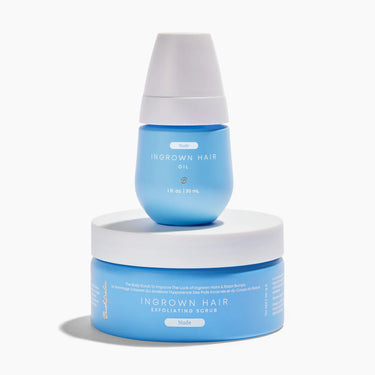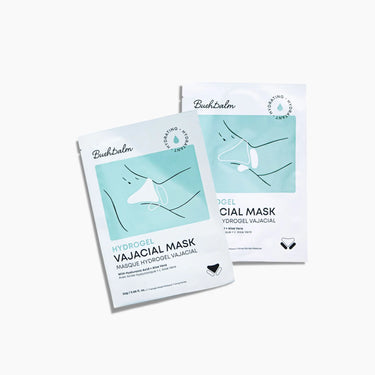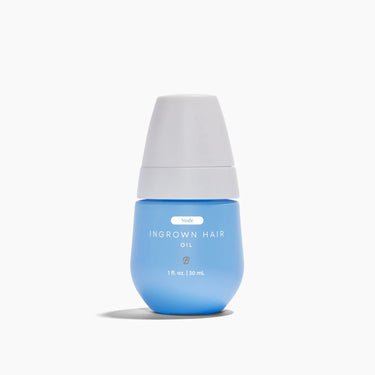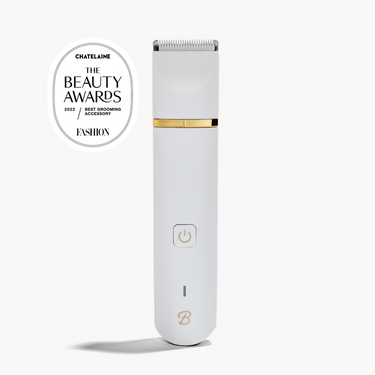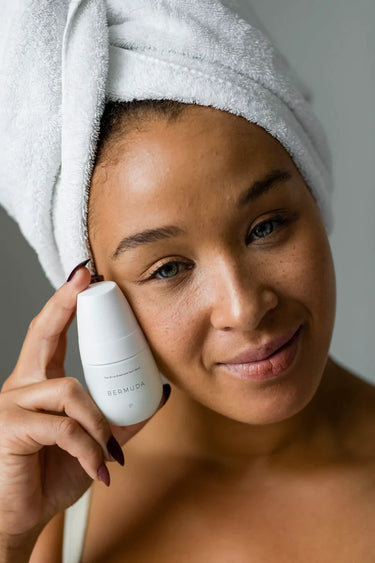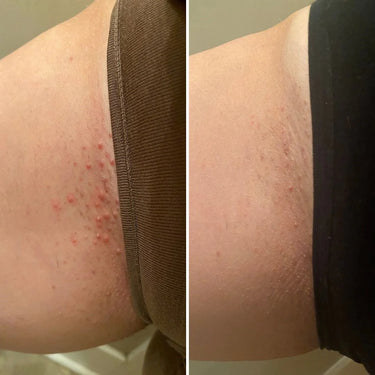What is Razor Burn and How to Prevent It
I’m sure each of us can vouch that razor burn really sucks. Whether it be on our face, pubic area, legs or even underarms, razor burn can cause a lot of discomfort. That’s why we’re going to do to a deep dive into: 1) what razor burn is; 2) the science behind razor burn; 3) the causes; 4) how to prevent razor burn; and 5) the difference between razor burn and razor bumps.
To learn more about how to treat razor burn directly, click here.

What is razor burn?
Shaving is a convenient and easy way to get rid of unwanted hair, but razor burn is a common side effect. Razor burn is the result of an unpleasant interaction between the razor blade, body hair, and skin. The symptoms of razor burn include; redness, irritation, discomfort, and stinging.
Click here to see the Bushbalm razor burn collection.

What's the science behind getting razor burn?
Shaving imposes a constant stress on the skin. There is something called our lipid barrier layer, which keeps moisture in the tissues and controls the entry of external chemicals into the deeper layers of the skin. When shaving you can compromise this layer, which results in dehydrated skin.
Click here to learn about shaving techniques to avoid razor burn.

What causes razor burn?
Dull razor
When your razor is dull, it takes more strokes to remove your unwanted hair. The 3-4 extra strokes irritate the skin substantially by causing micro-abrasions on the surface. Micro-abrasions are wounds to the top layer of skin that occur when the skin is rubbed aggressively. The abrasions leave the skin vulnerable to infection and irritation - causing the dreaded rashy razor burn to appear in the most delicate places. Make sure to maintain a sharp razor blade. We recommend using a razor blade max 10 times before switching it out for a new one.
Lack of proper cleaning
Throughout the day, dirt and oil accumulates on the surface of our skin. If you remove hair without properly cleaning the area beforehand, you run the risk of infecting the freshly opened hair follicles. Oils and dirt can seep into your skin causing a red and angry rash to appear in its place.
Dry shaving
Dry shaving is the worst! Dryness upon hair removal can leave your skin vulnerable to irritation. When the skin lacks moisture, it can become rough. Dragging a razor on an already rough surface can aggravate the skin and lead to uncomfortable razor burn. In the spur of the moment you may be thinking that it is saving you time but it really isn’t helping!

Tight clothing
Wearing tight clothing and/or undies can irritate newly shaved skin. According to Sarah Welsh, a gynecologist, body hair is a “natural anti-chafe mechanism” that acts as a buffer to protect the skin. When we remove body hair by shaving, the skin loses its protective layer. The skin becomes vulnerable to chafing. Chafing is when the skin becomes raw and irritated from being rubbed by skin, clothing, or other materials. The raw, irritated, and inflamed hair follicles will cause an angry razor rash to appear. It’s best to avoid tight clothing after shaving.

How to prevent razor burn:
Swap out your razors regularly!
It is so crucial to switch out your razor blade on a regular basis. A sharp razor will remove as much hair as possible while minimizing the number of strokes it takes to sufficiently remove it. The less passes a razor takes on the skin, the less irritation the skin endures. We recommend using a razor blade max 10 times before switching it out for a new one.
Trim before shaving
Trimming before shaving is very important because it prevents blade clogs. If you go straight to work without a trim, you’ll notice your blade clogging more often. When hairs clogs the razor, the blade becomes less sharp. This translates to more strokes needed to sufficiently remove the hair. The extra strokes will irritate the skin and cause micro-abrasions on the surface. Trimming the hair down before shaving will minimize blade clog and in turn prevent razor burn.
Click here to learn about how to use the Francesca Trimmer.
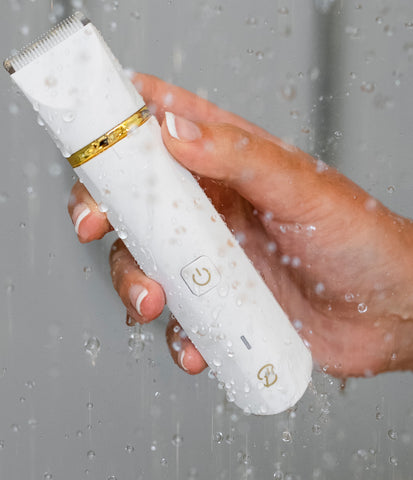
Always use a moisturizing agent to shave
Using a moisturizing agent (like a shaving cream or even conditioner) allows the blade to move more smoothly on your skin. TIP: use a natural and/or scent-free shaving cream to prevent skin irritation.
Shave with the grain
Shaving in the same direction of growth as the hair is very important This is a guaranteed way to avoid razor burn. Shaving with the grain minimizes tugging on the skin and hair. Whereas shaving against the grain increases the risk of irritation, nics, cuts, and razor burn.
Click here to learn more about shaving with the grain and/or how to safely shave against the grain if you want a closer shave while avoiding razor burn.
Be patient when you shave
Although you may be in a rush, take your time shaving. If you speed shave it increases the risk of nics, uncomfortable cuts, and skin tenderness. These openings could become infected and causing an angry razor rash.

Depending on your hair growth, do not shave daily
You may find it necessary to shave daily, but shaving daily will increase your chances of razor burn. Through shaving daily, you are not allowing your skin to heal and replenish itself from the previous shave.
Use a soothing oil on a daily basis
Just because you don't shave daily doesn't mean you shouldn't treat the areas you shave on a daily basis. Applying a soothing treatment oil really helps reduce inflammation/irritation and prevent razor burn from occurring even days after your shave.

Are razor bumps and razor burn the same thing?
Razor burn and razor bumps are two different conditions but often occur at the same time. Razor burn is the result of an unpleasant interaction between the razor blade and your skin. Razor bumps, on the other hand, are ingrown hairs (link ingrown hairs collection).









